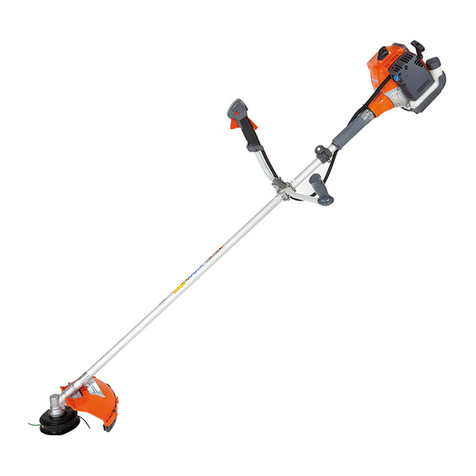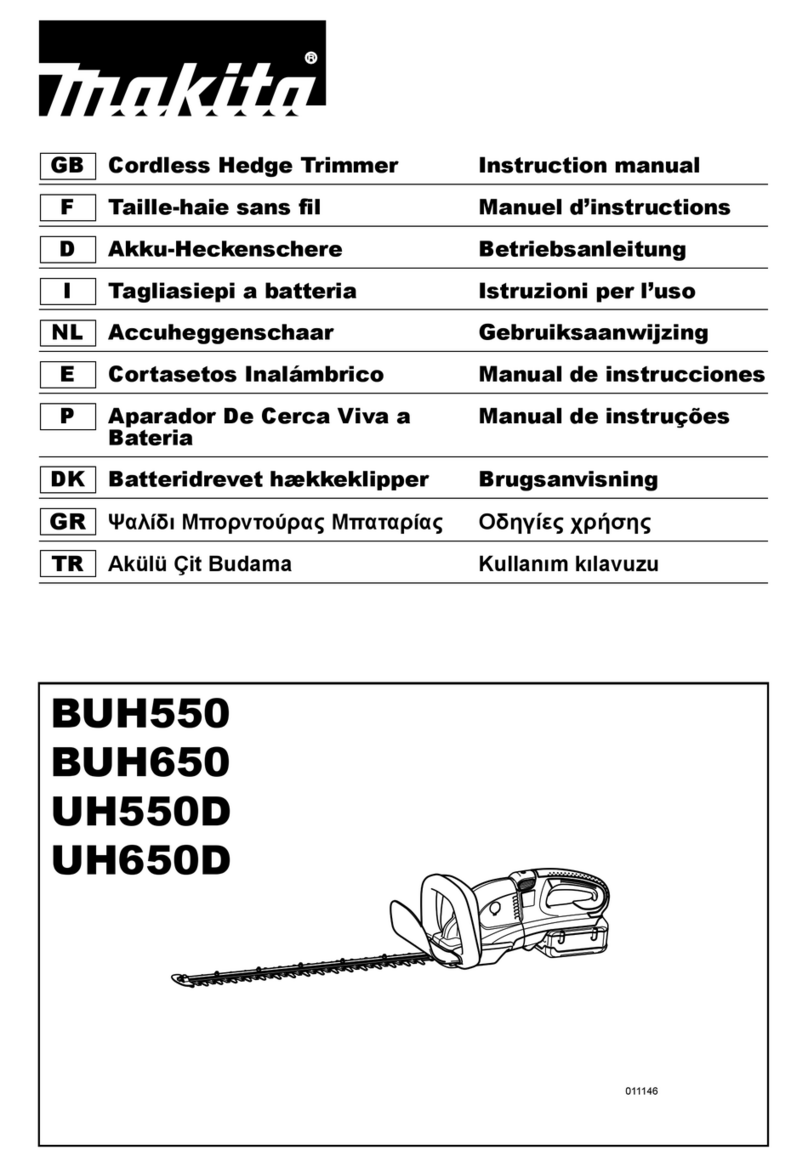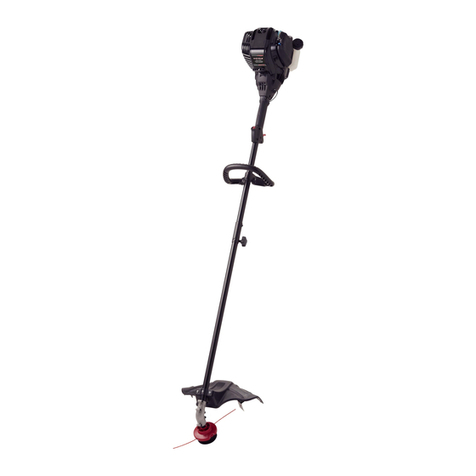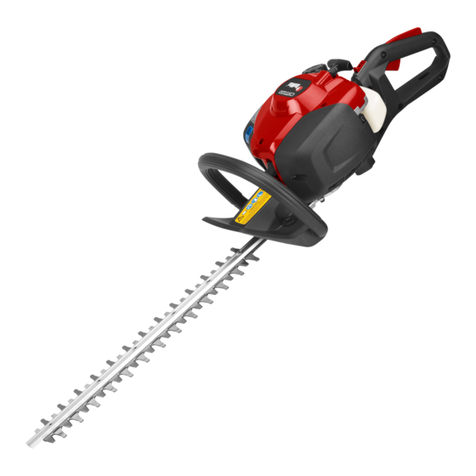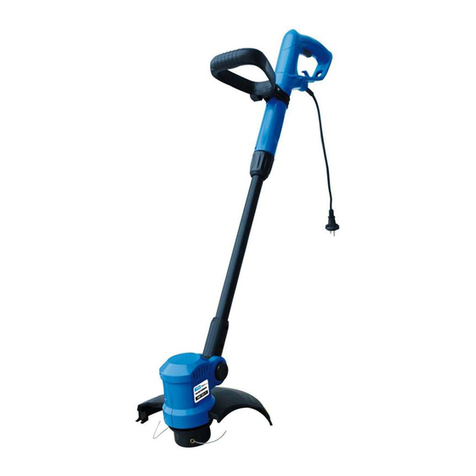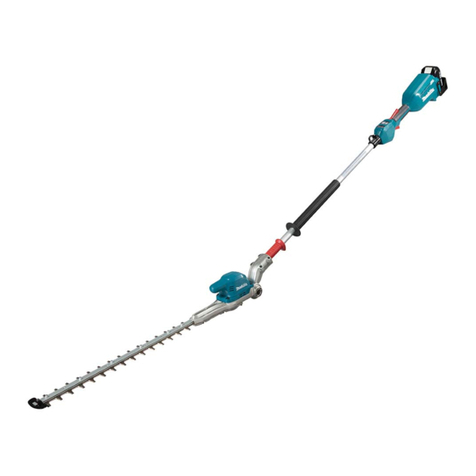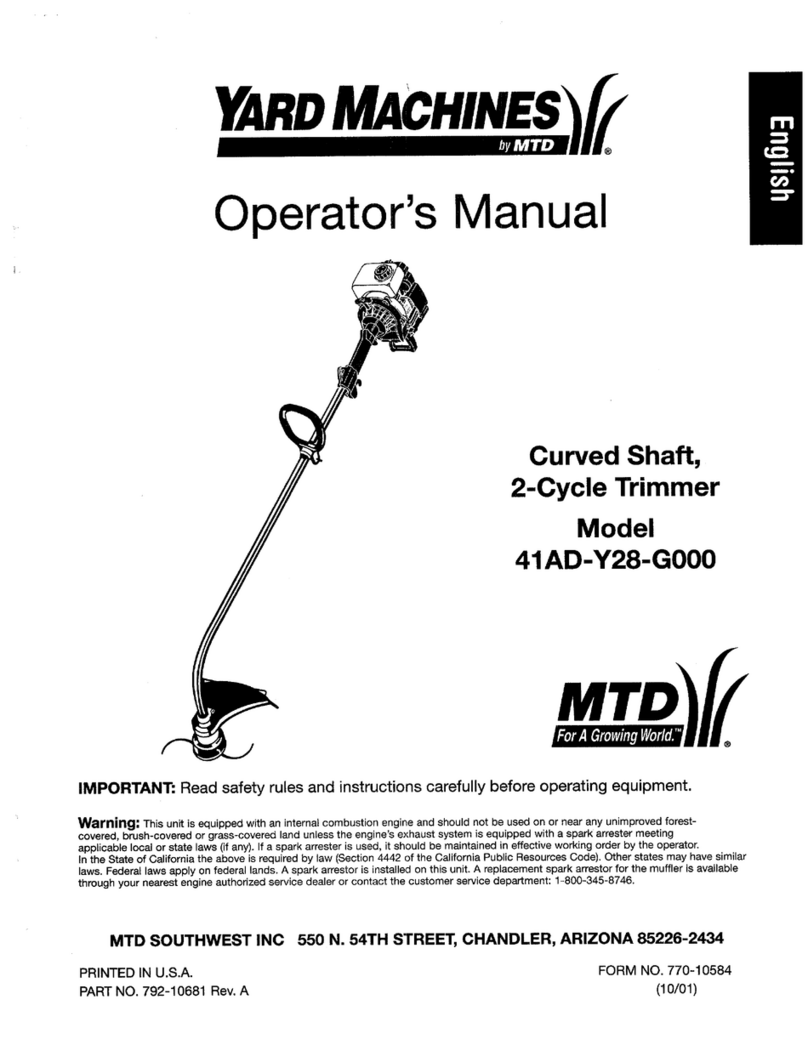Senix HTPX2-M User manual

20V MAX LITHIUM-ION
CORDLESS POLE HEDGE TRIMMER
Operator's manual
Model: HTPX2-M
HTPX2-M-0
For customer support, please call 1-800-261-3981 or send email to:
SAVE THIS MANUAL FOR FUTURE REFERENCE.
ORIGINAL INSTRUCTIONS
TM

EN - 2 WWW.SENIXTOOLS.COM
1
2
4
5
6
8
9
10
13
12
11
7
3
14
Locking Sleeve
Locking Base
Telescoping Ploe
Lock holes
Locking Base
Locking Sleeve
1
23

3 - ENWWW.SENIXTOOLS.COM
Bracket
Hook
Quick-Release Latch
Unlock Button
4
6
98
7
5
Safety Swicth
Switch Trigger
Telescoping Lock Clip
Telescoping Pole

EN - 4 WWW.SENIXTOOLS.COM
Telescoping
Lock Clip
Adjusting Bolt
Hex Key Tool
Telescoping
Lock Clip
Angle
Adjustment
Button
Light Button
10 11
13
15
12
14

5 - ENWWW.SENIXTOOLS.COM
Cutting Teeth Guard Teeth
16 17
19
18

EN - 6 WWW.SENIXTOOLS.COM
TABLE OF CONTENTS
SAFETY & INTERNATIONAL SYMBOLS ...........................6
SAFETY INSTRUCTIONS...................................................7
KNOW YOUR UNIT............................................................21
SPECIFICATIONS*............................................................21
ASSEMBLY.........................................................................22
OPERATION.......................................................................22
MAINTENANCE..................................................................25
TROUBLESHOOTING.......................................................27
WARRANTY........................................................................28
SAFETY & INTERNATIONAL
SYMBOLS
Explanation of Safety & international symbols describes
safety and international symbols and pictographs that may
appear on this product. Read the operator’s manual for
complete safety, assembly, operating and maintenance and
repair information.
Caution / Warning.
To reduce the risk of injury, user must read
instruction manual.
Wear eye protectionn and safety helmet.
Wear hearing protection.
Wear protective gloves.
Wear safety footwear.
DANGER – Keep hands away from blade.
Do not use in rain or wet conditions.
Keep bystanders a safe distance away from
the work area.
Keep at least 33 ft (10 m) away from power
lines. Do not overreach. Keep proper footing
and balance at all times.
Do not dispose of battery packs in rivers or
immerse in water.
Do not dispose of battery packs in fire. They
will explode and cause injury.
Use and store the battery within an temperature
below 122°F(50°C).
Do not disassemble, crush, heat above
212°F(100°C); Never expose the battery to
microwaves or high pressures.
Indoor use only. Only use battery charger
indoors.
33ft

7 - ENWWW.SENIXTOOLS.COM
SAFETY INSTRUCTIONS
All Operators Must Read These
Instructions Before Use.
Always follow these safety
guidelines. Failure to do so may
result in serious bodily injury or
death.
DANGER!
This indicates a hazardous situation,
which, if not followed, will result in
serious injury or death.
WARNING!
This indicates a hazardous situation,
which, if not followed, could result in
serious injury or death.
CAUTION!
This indicates a hazardous situation,
which, if not followed, could result in
minor or moderate injury.
GENERAL POWER TOOL SAFETY
WARNINGS
WARNING!
Read all instructions Failure to follow
all instructions listed below may
result in electric shock, re and/
or serious injury. The term power
tool in all of the warnings listed
below refers to your mains-operated
(corded) power tool or battery-
operated (cordless) power tool.
SAVE THESE INSTRUCTIONS
1) Work Area Safety
a) Keep work area clean and well lit
– Cluttered or dark areas invite
accidents.
b) Do not operate power tools in
explosive atmospheres, such
as in the presence of ammable
liquids, gases or dust – Power
tools create sparks which may
ignite the dust or fumes.
c) Keep children and bystanders
away while operating a power
tool – Distractions can cause
you to lose control.
2) Electrical Safety
a) Power tool plugs must match the
outlet. Never modify the plug in
any way. Do not use any adapter
plugs with earthed (grounded)
power tools. Unmodied plugs
and matching outlets will reduce
risk of electric shock.
b) Avoid body contact with earthed
or grounded surfaces, such
as pipes, radiators, ranges
and refrigerators – There is
an increased risk of electric
shock if your body is earthed or
grounded.
c) Do not expose power tools to
rain or wet conditions – Water
entering a power tool will
increase the risk of electric

EN - 8 WWW.SENIXTOOLS.COM
the switch is in the off-position
before plugging in – Carrying
power tools with your nger on
the switch or plugging in power
tools that have the switch on
invites accidents.
d) Remove any adjusting key or
wrench before turning the power
tool on – A wrench or a key
left attached to a rotating part
of the power tool may result in
personal injury.
e) Do not overreach. Keep proper
footing and balance at all times
– This enables better control of
the power tool in unexpected
situations.
f) Dress properly. Do not wear
loose clothing or jewelry. Keep
your hair, clothing and gloves
away from moving parts – Loose
clothes, jewelry or long hair can
be caught in moving parts.
g) If devices are provided for the
connection of dust extraction
and collection facilities, ensure
these are connected and
properly used – Use of dust
collection can reduce dust-
related hazards.
4) Power Tool Use + Care
a) Do not force the power tool. Use
the correct power tool for your
shock.
e) Do not abuse the cord. Never
use the cord for carrying, pulling
or unplugging the power tool.
Keep cord away from heat, oil,
sharp edges or moving parts.
Damaged or entangled cords
increase the risk of electric
shock.
f) When operating a power tool
outdoors, use an extension cord
suitable for outdoor use. Use
of a cord suitable for outdoor
use reduces the risk of electric
shock.
3) Personal Safety
a) Stay alert, watch what you are
doing and use common sense
when operating a power tool. Do
not use a power tool while you
are tired or under the inuence
of drugs, alcohol or medication
– A moment of inattention while
operating power tools may result
in serious personal injury.
b) Use safety equipment. Always
wear eye protection – Safety
equipment such as dust mask,
non-skid safety shoes, hard
hat, or hearing protection used
for appropriate conditions will
reduce personal injuries.
c) Avoid accidental starting. Ensure

9 - ENWWW.SENIXTOOLS.COM
application – The correct power
tool will do the job better and
safer at the rate for which it was
designed.
b) Do not use the power tool if
the switch does not turn it on
and off – Any power tool that
cannot be controlled with the
switch is dangerous and must be
repaired.
c) Disconnect the battery pack
from the power tool before
making any adjustments,
changing accessories, or storing
power tools – Such preventive
safety measures reduce the
risk of starting the power tool
accidentally.
d) Store idle power tools out of the
reach of children and do not
allow persons unfamiliar with the
power tool or these instructions
to operate the power tool –
Power tools are dangerous in
the hands of untrained users.
e) Maintain power tools. Check
for misalignment or binding of
moving parts, breakage of parts
and any other condition that may
affect the power tool’s operation.
If damaged, have the power
tool repaired before use – Many
accidents are caused by poorly
maintained power tools.
f) Keep cutting tools sharp and
clean – Properly maintained
cutting tools with sharp cutting
edges are less likely to bind and
are easier to control.
g) Use the power tool, accessories
and tool bits etc., in accordance
with these instructions and in
the manner intended for the
particular type of power tool,
taking into account the working
conditions and the work to be
performed – Use of the power
tool for operations different from
those intended could result in a
hazardous situation.
5) Service
a) Have your power tool serviced by
a qualied repair person using
only identical replacement parts.
This will ensure that the safety of
the power tool is maintained.
ADDITIONAL SAFETY RULES
FOR POLE HEDGE TRIMMER
a) Remove any blade that has
been damaged. Always make
sure that the blade is installed
correctly and securely fastened
before each use. Failure to do
so can cause serious injury.
b) Hold the pole hedge trimmer by
insulated gripping surfaces only,

EN - 10 WWW.SENIXTOOLS.COM
removed when clearing jammed
material. A moment of inattention
while operating the pole hedge
trimmer may result in serious
personal injury.
h) Carry the pole hedge trimmer by
the handle with the cutting blade
stopped. When transporting or
storing the pole hedge trimmer
always keep the blade covered.
Proper handling of the pole
hedge trimmer will reduce
possible personal injury from the
cutter blades.
i) Do not use the pole hedge
trimmer if the switch does not
turn it on and off. Any power tool
that cannot be controlled with
the switch is dangerous and
must be repaired.
j) Use the pole hedge trimmer
and accessories in accordance
with these instructions, taking
into account the working
conditions and the work to be
performed. Use of the power
tool for operations different from
intended use could lead to a
hazardous situation.
k) Do not overreach and keep the
balance at all times. Always be
sure of the footing on slopes.
Walk when operating the power
tool, never run.
because the cutter blade may
contact hidden wiring. Cutter
blades contacting a "live" wire
may electrify exposed metal
parts of the power tool and could
give the operator an electric
shock.
c) Maintain a rm grip on both
handle and pole while cutting
with the blade. Keep the blade
away from body.
d) Hold pole hedge trimmer
properly, e.g., with both hands.
Loss of control can cause
personal injury.
e) Check the hedge for foreign
objects before operation, e.g.,
center fences. Take care that the
cutting device does not come in
contact with wire or other metal
objects.
f) Service on the product must
be performed by qualied
repair personnel only. Service
or maintenance performed by
unqualied personnel could
result in injury to the user or
damage to the product.
g) Keep all parts of the body away
from the cutting blade. Do not
remove cut material or hold
material to be cut when blades
are moving. Make sure the
switch is off and the battery is

11 - ENWWW.SENIXTOOLS.COM
l) Do not touch moving hazardous
parts before the battery pack
is removed and the moving
hazardous parts have come to a
complete stop.
m) Always wear eye and ear
protection. Wear protective
mask if necessary. Dress
properly, do not wear loose
clothing or jewelry that could
become caught in moving parts
of the unit. Safe, sturdy, nonskid
footwear should always be worn.
Long hair should be tied back.
n) Do not use the machine in bad
weather conditions especially
when there is a risk of lightning.
o) Inspect the area to be cut and
remove any foreign objects
that will inuence your cutting.
If the foreign objects can not
be removed, e.g. wire fences,
please mark and remember it
to avoid touching them during
cutting.
DANGER!
Keep hands away from blade.
Contact with blade will result in
serious personal injury.
1) Training
a) Read the instructions carefully.
Be familiar with the controls and
the proper use of the product.
b) Never allow people unfamiliar
with these instructions or
children to use the product.
Local regulations can restrict the
age of the operator.
c) Keep in mind that the operator or
user is responsible for accidents
or hazards occurring to other
people or their property.
2) Preparation
a) This product can cause serious
injuries. Read the instructions
carefully for the correct handling,
preparation, maintenance,
starting and stopping of the
product. Become familiar with all
controls and the proper use of
the product.
b) Never allow children to use the
pole hedge trimmer.
c) Beware of overhead power lines.
d) Never operate the product while
people, especially children, or
pets are nearby.
e) Dress properly. Do not wear
loose clothing or jewelry, which
can be caught in moving parts.
Use of sturdy gloves, non-skid
footwear and safety glasses is
recommended.
f) Wear eye protection and
stout shoes at all times while

EN - 12 WWW.SENIXTOOLS.COM
– after striking a foreign object;
– whenever the product starts
vibrating abnormally.
e) Ensure that the pole hedge
trimmer is correctly located in
a designated working position
before starting the motor.
f) While operating the pole hedge
trimmer, always ensure that the
operating position is safe and
secure, especially when using
steps or a ladder.
g) Do not operate the pole hedge
trimmer with a damaged or
excessively worn cutting device.
h) Always ensure that all handles
and guards are tted when using
the pole hedge trimmer. Never
attempt to use an incomplete
pole hedge trimmer or one
tted with an unauthorized
modication.
i) Always use two hands to operate
a pole hedge trimmer.
j) Always be aware of your
surroundings and stays alert for
possible hazards of which you
may not be aware due to the
noise of the product.
k) Take care against injury to feet
and hands from the cutting
device.
l) Always ensure that the air vents
are kept clear of debris.
operating the product.
g) If the cutting attachment strikes
any foreign object or the product
starts making any unusual noise
or vibration, switch the product
off, allow the product to stop,
remove the battery, and take the
following steps:
– inspect for damage;
– check for, and tighten, any loose
parts;
– have any damaged parts replaced
or repaired with parts having
equivalent specications.
3) Operation
a) Use the product only in daylight
or good articial light.
b) Keep hands and feet away from
the cutting device at all times
and especially when switching
on the motor.
c) Before using the product and
after any impact, check for signs
of wear or damage and repair as
necessary.
d) Always remove the battery
– whenever leaving the product
unattended;
– adjusting the working position of
the cutting device;
– before clearing a blockage;
– before checking, cleaning or
working on the product;

13 - ENWWW.SENIXTOOLS.COM
m) Wear slip-resistant foot
protection and protective
clothing when using this product.
n) Always keep proper footing and
operate the product only when
standing on a xed, secure
and level surface. Change
working positions regularly to
avoid tiredness and ensure a
comfortable working position at
all times.
o) Never use replacement parts
or accessories not provided
or recommended by the
manufacturer.
p) The use of this product may be
restricted by regional or local
regulations.
VIBRATION + NOISE REDUCTION
To reduce the impact of noise and
vibration emission, limit the time of
operation, use low-vibration and low-
noise operating modes as well as
wear personal protective equipment.
Take the following points into
account to minimise the vibration
and noise exposure risks.
a) Only use the product as
intended by its design and these
instructions.
b) Ensure that the product is
in good condition and well
maintained.
c) Use correct attachments for the
product and ensure they are in
good condition.
d) Keep tight grip on the handles/
grip surface.
e) Maintain this product in
accordance with these
instructions and keep it well
lubricated (where appropriate).
f) Plan your work schedule to
spread any high vibration tool
use across a longer period of
time.
EMERGENCY
Familiarize yourself with the use
of this product by means of this
instruction manual. Memorize the
safety directions and follow them to
the letter. This will help to prevent
risks and hazards.
a) Always be alert when using
this product, so that you can
recognize and handle risks early.
Fast intervention can prevent
serious injury and damage to
property.
b) Switch off and remove the
battery if there are malfunctions.
Have the product checked by
a qualied professional and
repaired, if necessary, before
you operate it again.

EN - 14 WWW.SENIXTOOLS.COM
RESIDUAL RISKS
Even if you are operating this
product in accordance with all
the safety requirements, potential
risks of injury and damage remain.
The following dangers can arise in
connection with the structure and
design of this product:
a) Health defects resulting from
vibration emission if the
product is being used over
long periods of time or not
adequately handled and properly
maintained.
b) Injuries and damage to
property due to broken cutting
attachments or the sudden
impact of hidden objects during
use.
c) Danger of injury and property
damage caused by ying
objects.
WARNING!
This product produces an
electromagnetic eld during
operation. This eld may under
some circumstances interfere with
active or passive medical implants!
To reduce the risk of serious or fatal
injury, we recommend persons with
medical implants to consult their
doctor and the medical implant
manufacturer before operating
this product.
BATTERY & CHARGER SAFETY
INSTRUCTIONS
We pay a great deal of attention to
the design of every battery pack
to ensure that we supply you with
batteries that are safe, durable and
have a high energy density. The
battery cells have a wide range of
safety devices. Each individual cell
is initially formatted and its electrical
characteristic curves are recorded.
This data is then used exclusively
to be able to assemble the best
possible battery packs.
Despite all the safety precautions,
caution must always be exercised
when handling batteries. The
following points must be obeyed
at all times to ensure safe use.
Safe use can only be guaranteed if
undamaged cells are used. Incorrect
handling of the battery pack can
cause cell damage.
IMPORTANT! Analyses conrm that
incorrect use and poor care of high-
performance batteries are the main
factors responsible for personal and/
or product damage.
WARNING!
Use only approved replacement
batteries; other batteries may
damage the pole hedge trimmer and
cause it to malfunction.

15 - ENWWW.SENIXTOOLS.COM
CAUTION!
To reduce the risk of injury, charge
the lithium-ion battery pack only in
its charger. Other types of chargers
present risk of re, personal injury
and damage. Do not wire a battery
pack to a power supply plug or car
cigarette lighter. Such misuse will
permanently disable or damage the
battery pack.
a) Avoid dangerous environments
– Do not charge the battery pack
in rain, snow or in damp or wet
locations. Do not use the battery
pack or charger in the presence
of explosive atmospheres
(gaseous fumes, dust or
ammable materials) because
sparks may be generated when
inserting or removing the battery
pack, which could lead to a re.
b) Charge in a well-ventilated
area – Do not block the charger
vents. Keep them clear to allow
for proper ventilation. Do not
allow smoking or open ames
near a charging battery pack.
Vented gases may explode.
NOTE: The safe temperature
range for the battery is 41°F –
105ºF (5°C – 40.5°C). Do not
charge the battery outside in
freezing weather; charge it at
room temperature.
c) Maintain charger cord – When
unplugging the charger, pull
the plug, not the cord, from
the receptacle to reduce the
risk of damage to the electrical
plug and cord. Never carry the
charger by its cord or yank it by
the cord to disconnect it from
the receptacle. Keep the cord
away from heat, oil and sharp
edges. Make sure the cord will
not be stepped on, tripped over
or subjected to damage or stress
when the charger is in use.
Do not use the charger with a
damaged cord or plug. Replace
a damaged charger immediately.
d) Do not use an extension cord
unless it is absolutely necessary
– Using the wrong, damaged or
improperly wired extension cord
poses a risk of re and electric
shock. If an extension cord must
be used, plug the charger into
a properly wired 16 gauge or
larger extension cord with the
female plug matching the male
plug on the charger. Make sure
that the extension cord is in
good electrical condition.
e) The charger is rated for 120 volt
AC only – The charger must
be plugged into an appropriate

EN - 16 WWW.SENIXTOOLS.COM
receptacle.
f) Use only recommended
attachments – Use of an
attachment not recommended
or sold by the battery charger
or battery pack manufacturer
may result in risk of re, electric
shock or personal injury.
g) Unplug charger when not in use
– Make sure to remove battery
packs from unplugged chargers.
WARNING!
To reduce the risk of electric shock,
always unplug the charger before
performing any cleaning or
maintenance. Do not allow water to
ow into the charger.
Use a Ground Fault Circuit
Interrupter (GFCI) to reduce shock
hazards.
h) Do not burn or incinerate battery
packs – Battery packs may
explode, causing personal injury
or damage. Toxic fumes and
materials are created when
battery packs are burned.
i) Do not crush, drop or damage
battery packs – Do not use the
battery pack or charger if they
have sustained a sharp blow,
been dropped, run over or have
been damaged in any way (i.e.
pierced with a nail, hit with a
hammer, stepped on, etc.).
j) Do not disassemble – Incorrect
reassembly may pose a serious
risk of electric shock, re
or exposure to toxic battery
chemicals. If the battery or
charger are damaged, please
contact an authorized customer
service center.
k) Battery chemicals cause
serious burns – Never let a
damaged battery pack contact
the skin, eyes or mouth. If a
damaged battery pack leaks
battery chemicals, use rubber
or neoprene gloves to safely
dispose of it. If skin is exposed
to battery uids, wash the
affected area with soap and
water and rinse with vinegar.
If eyes are exposed to battery
chemicals, immediately ush
with water for 20 minutes and
seek medical attention. Remove
and dispose of contaminated
clothing.
l) Do not short circuit – When
battery pack is not in use, keep
it away from other metal objects,
like paper clips, coins, keys,
nails, screws or other small
metal objects, that can make a
connection from one terminal

17 - ENWWW.SENIXTOOLS.COM
to another. Shorting the battery
terminals together may cause
burns or a re.
m) Store your battery pack and
charger in a cool, dry place –
Do not store the battery pack
or charger where temperatures
may exceed 105ºF (40.5ºC),
such as in direct sunlight or
inside a vehicle or metal building
during the summer.
BATTERY TOOL USE AND CARE
a) The battery pack supplied
with your pole hedge trimmer
is only partially charged. The
battery pack has to be charged
completely before you use the
tool for the rst time.
b) For optimum battery
performance, avoid low
discharge cycles by charging the
battery pack frequently.
c) Store the battery pack in a cool
place, ideally at 77°F (25°C)
and fully charged.
d) Lithium-ion batteries are subject
to a natural aging process. The
battery pack must be replaced
at the latest when its capacity
falls to just 80% of its capacity
when new. Weakened cells in an
aged battery pack are no longer
capable of meeting the high
power requirements needed for
the proper operation of your pole
hedge trimmer, and therefore
pose a safety risk.
e) Do not throw battery packs into
an open re as this poses a risk
of explosion.
f) Do not ignite the battery pack or
expose it to re.
g) Do not exhaustively discharge
batteries. Exhaustive discharge
will damage the battery cells.
The most common cause
of exhaustive discharge is
lengthy storage or non-use of
partially discharged batteries.
Stop working as soon as the
performance of the battery falls
noticeably or the electronic
protection system triggers. Place
the battery pack in storage only
after it has been fully charged.
h) Protect batteries and the tool
from overloads. Overloads will
quickly result in overheating and
cell damage inside the battery
housing even if this overheating
is not apparent externally.
i) Avoid damage and shocks.
Immediately replace batteries
that have been dropped from a
height of more than one meter or
those that have been exposed
to violent shocks, even if the

EN - 18 WWW.SENIXTOOLS.COM
housing of the battery pack
appears to be undamaged. The
battery cells inside the battery
may have suffered serious
damage. In such instances,
please read the waste disposal
information for proper battery
disposal.
j) If the battery pack suffers
overloading and overheating,
the integrated protective cutoff
will switch off the equipment for
safety reasons. IMPORTANT!
Do not press the switch trigger
any more if the protective cut-off
has been activated. This may
damage the battery pack.
k) Recharge only with the charger
specied by the manufacturer. A
charger that is suitable for one
type of battery pack may create
a risk of re when used with
another battery pack.
l) Use appliances only with
specically designated battery
packs. Use of any other battery
packs may create a risk of injury
and re.
m) Under abusive conditions,
liquid may be ejected from the
battery; avoid contact. If contact
accidentally occurs, ush with
water. If liquid contacts eyes,
additionally seek medical help.
Liquid ejected from the battery
may cause irritation or burns.
n) Do not use a battery pack or
appliance that is damaged
or modied. Damaged or
modied batteries may exhibit
unpredictable behavior resulting
in re, explosion or risk of injury.
o) Do not expose a battery pack
or appliance to re or excessive
temperature. Exposure to re
or temperature above 266ºF
(130°C) may cause explosion.
p) Follow all charging instructions
and do not charge the battery
pack or appliance outside of
the temperature range specied
in the instructions. Charging
improperly or at temperatures
outside of the specied range
may damage the battery and
increase the risk of re.
q) Use power tools only with
specically designated battery
packs. Use of any other battery
packs may create a risk of injury
and re.
INFORMATION ABOUT THE
CHARGER AND THE CHARGING
PROCESS
a) Please check the data marked
on the rating plate of the battery
charger. Be sure to connect

19 - ENWWW.SENIXTOOLS.COM
the battery charger to a power
supply with the voltage marked
on the rating plate. Never
connect it to a different mains
voltage.
b) Protect the battery charger and
its cord from damage. Keep the
charger and its cord away from
heat, oil and sharp edges. Have
damaged cords repaired without
delay by a qualied technician at
an authorized customer service
center.
c) Electrical plugs must match the
outlet. Never modify the plug in
any way. Do not use any adapter
plugs with grounded appliances.
Unmodied plugs and matching
outlets will reduce the risk of
electric shock.
d) Keep the battery charger, battery
pack(s) and the cordless tool out
of the reach of children.
e) Do not use the supplied battery
charger to charge other cordless
tools.
f) During periods of heavy use,
the battery pack will become
warm. Allow the battery pack to
cool to room temperature before
connecting it to the charger to
recharge.
g) Do not overcharge batteries.
Do not exceed the maximum
charging times. These charging
times only apply to discharged
batteries. Frequent connection
of a charged or partially
charged battery pack will
result in overcharging and cell
damage. Do not leave batteries
connected to the charger for
days on end.
h) Never use or charge batteries
if you suspect that it has been
more than 12 months since the
last time they were charged.
There is a high probability that
the battery pack has already
suffered dangerous damage
(exhaustive discharge).
i) Charging batteries at a
temperature below 41°F (5°C)
will cause chemical damage to
the cells and may cause a re.
PROTECTION FROM
ENVIRONMENTAL INFLUENCES
a) Wear suitable work clothes.
Wear safety goggles.
b) Protect your cordless tool
and the battery charger from
moisture and rain. Moisture and
rain can cause dangerous cell
damage.
c) Do not use the cordless tool or
the battery charger near vapors
and ammable liquids.

EN - 20 WWW.SENIXTOOLS.COM
d) Use the battery charger and
cordless tools only in dry
conditions and at an ambient
temperature of 41ºF – 105°F
(5°C – 40.5°C).
e) Do not keep the battery charger
in places where the temperature
is liable to reach over 105°F
(40.5°C). In particular, do
not leave the battery charger
in a car that is parked in the
sunshine.
f) Protect batteries from
overheating. Overloads,
overcharging and exposure
to direct sunlight will result in
overheating and cell damage.
Never charge or work with
batteries that have been
overheated – replace them
immediately, if possible.
g) Store the charger and your
cordless tool only in dry
locations with an ambient
temperature of 41ºF – 105°F
(5°C – 40.5°C). Store your
lithium-ion battery pack in a
cool, dry place at a temperature
of 77°F (25°C). Protect the
battery pack, charger and
cordless tool from humidity and
direct sunlight. Only place fully
charged batteries in storage.
h) Prevent the lithium-ion battery
pack from freezing. Battery
packs that were stored below
32°F (0°C) for more than 60
minutes must be discarded.
i) When handling batteries, be
wary of electrostatic charge.
Electrostatic discharges can
damage the electronic protection
system and the battery cells.
Avoid electrostatic charging and
never touch the battery poles.
This manual suits for next models
1
Table of contents
Languages:
Other Senix Trimmer manuals
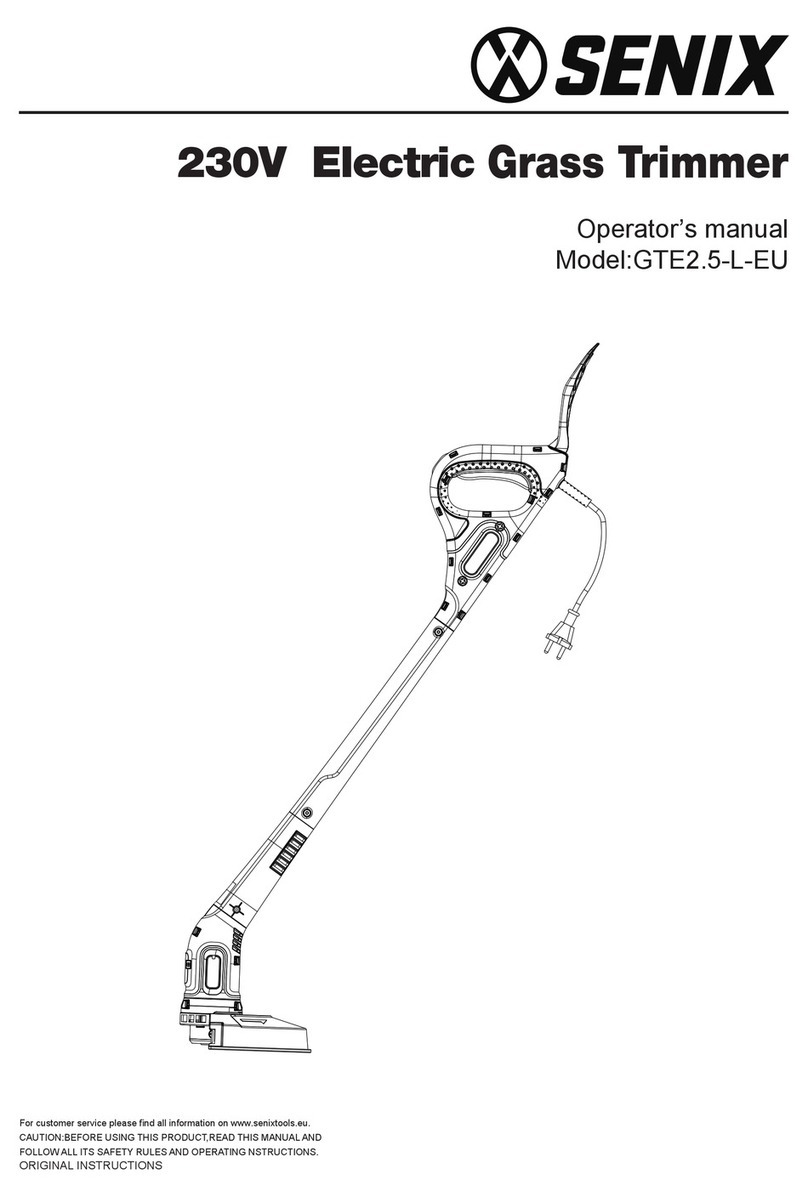
Senix
Senix GTE2.5-L-EU User manual

Senix
Senix HTX5-M User manual
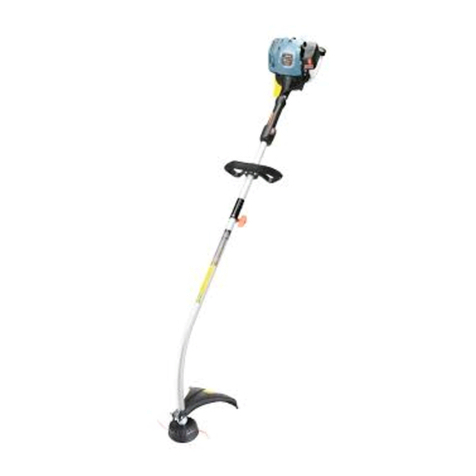
Senix
Senix GTC4QL-L User manual
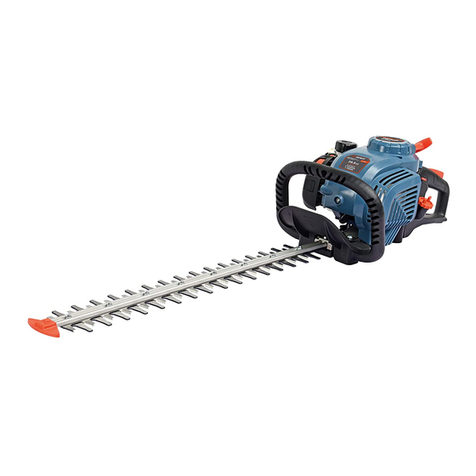
Senix
Senix HT4QL-L User manual
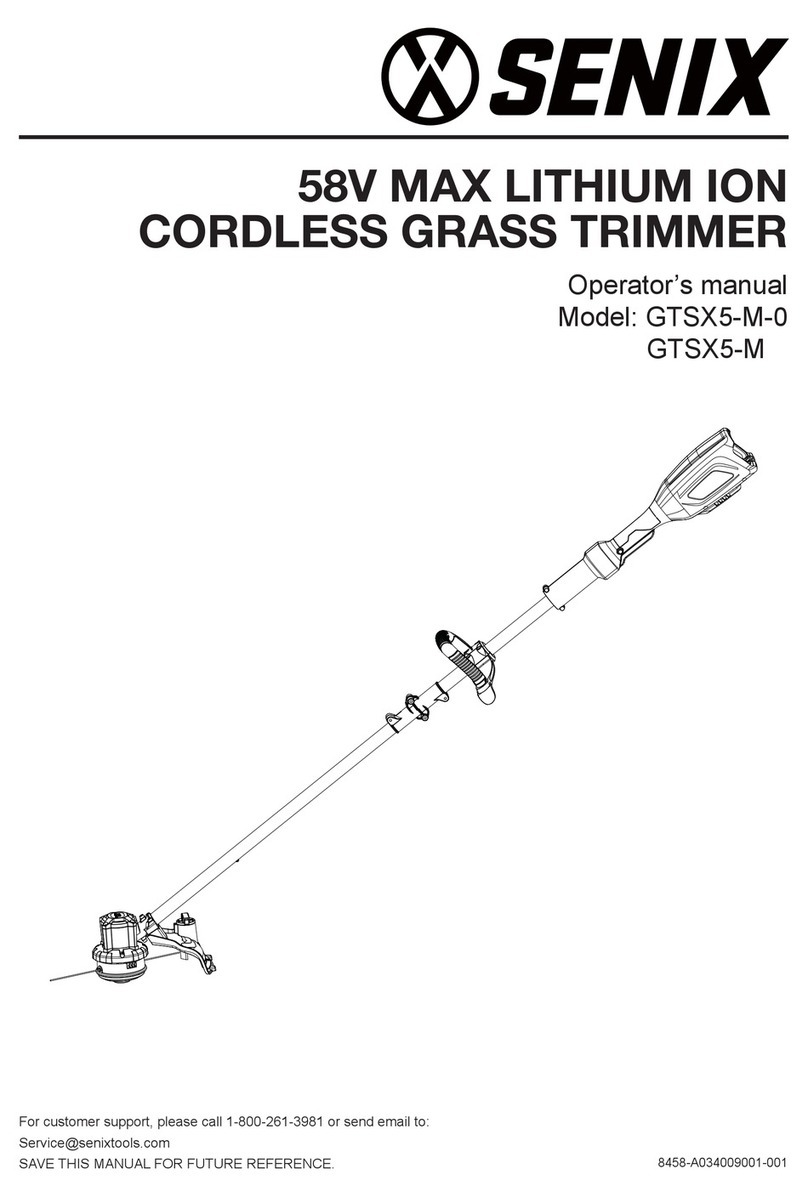
Senix
Senix GTSX5-M-0 User manual
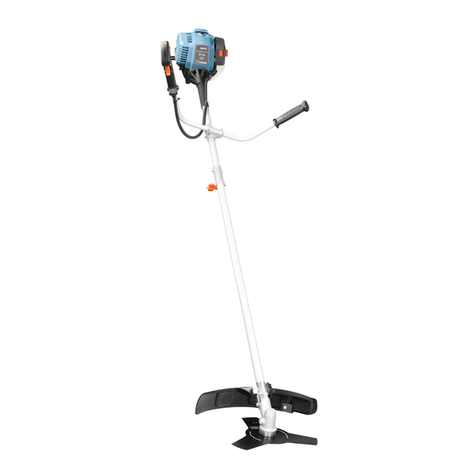
Senix
Senix GTBCU4QL-M User manual
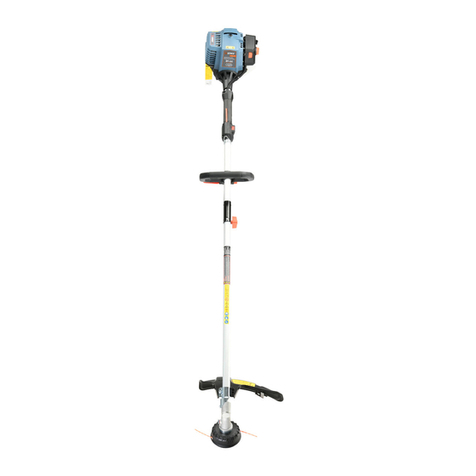
Senix
Senix GTS4QL-M2 User manual

Senix
Senix HTE3.8-L User manual

Senix
Senix HTX2-M User manual
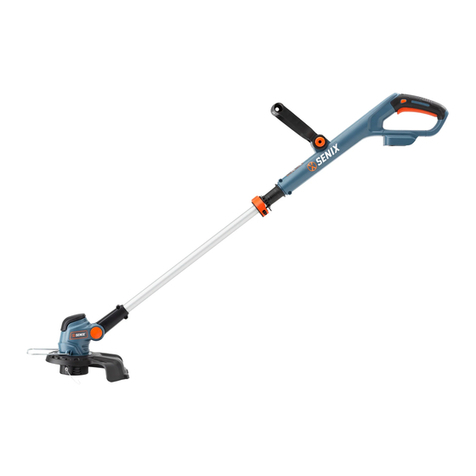
Senix
Senix GTX2-M User manual
Popular Trimmer manuals by other brands
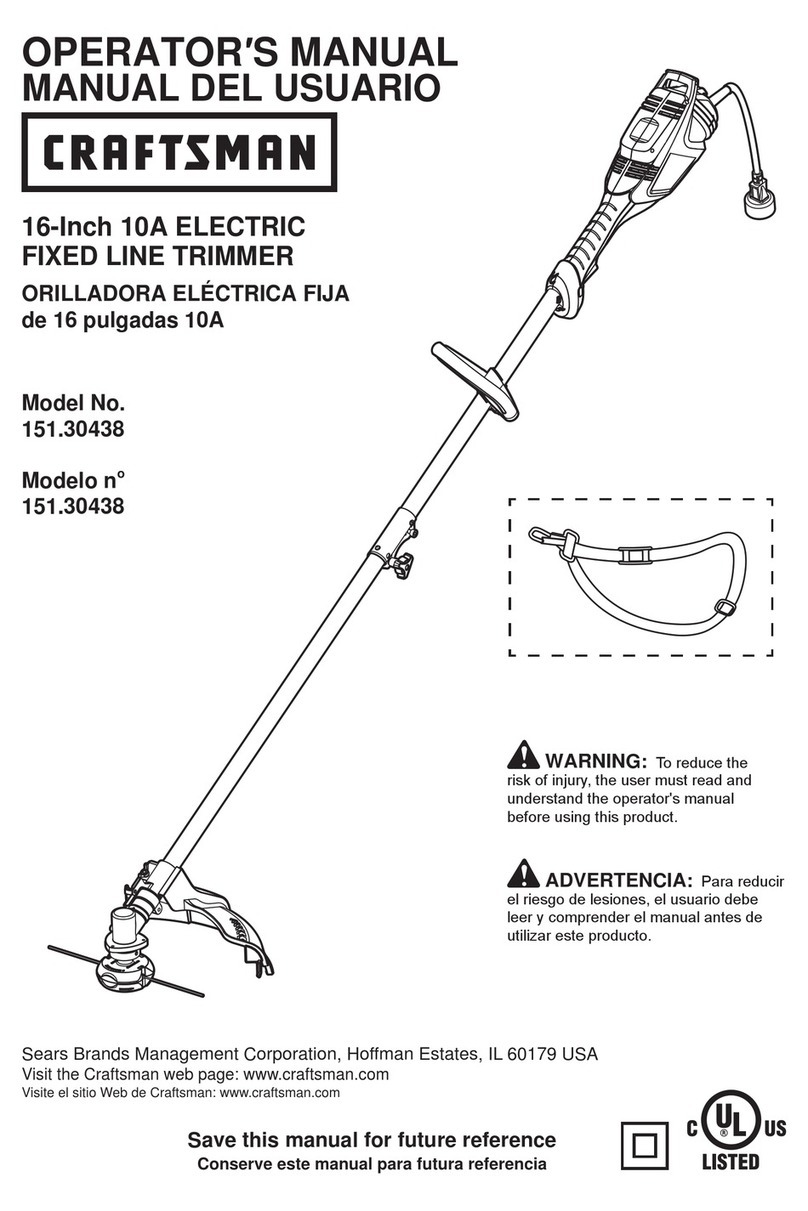
Craftsman
Craftsman 151.30438 Operator's manual
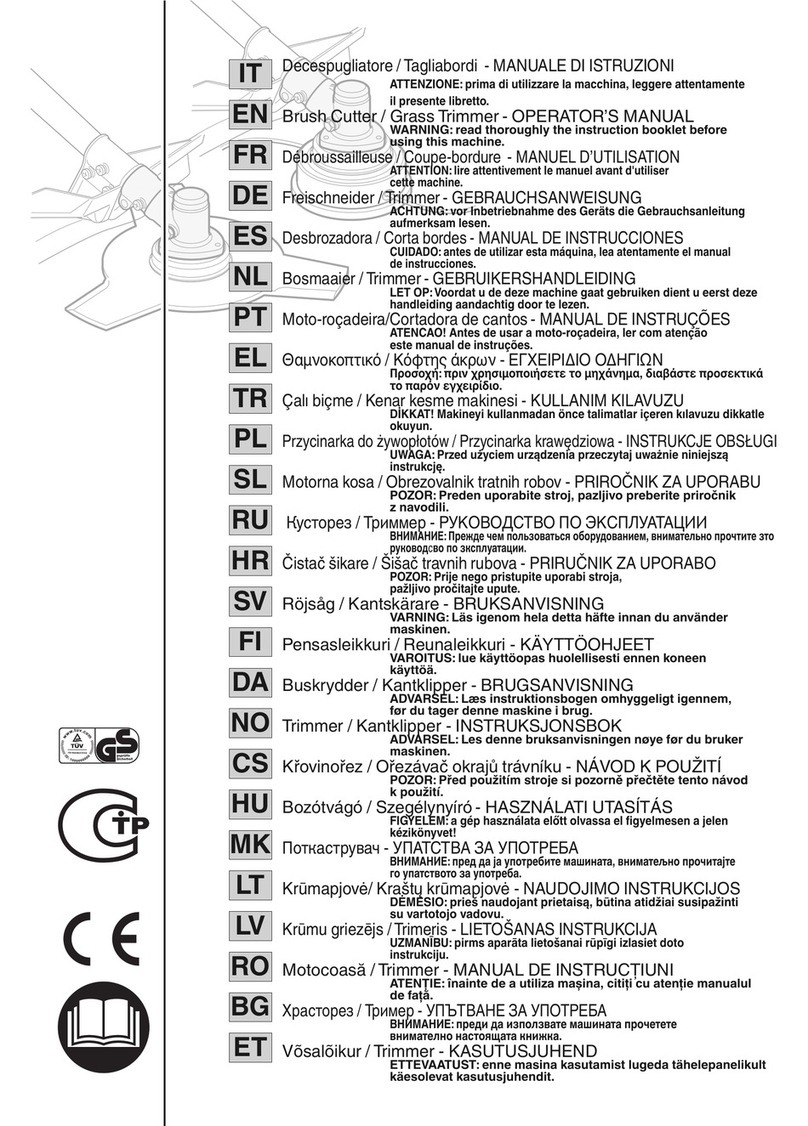
GGP ITALY
GGP ITALY B 28 Operator's manual
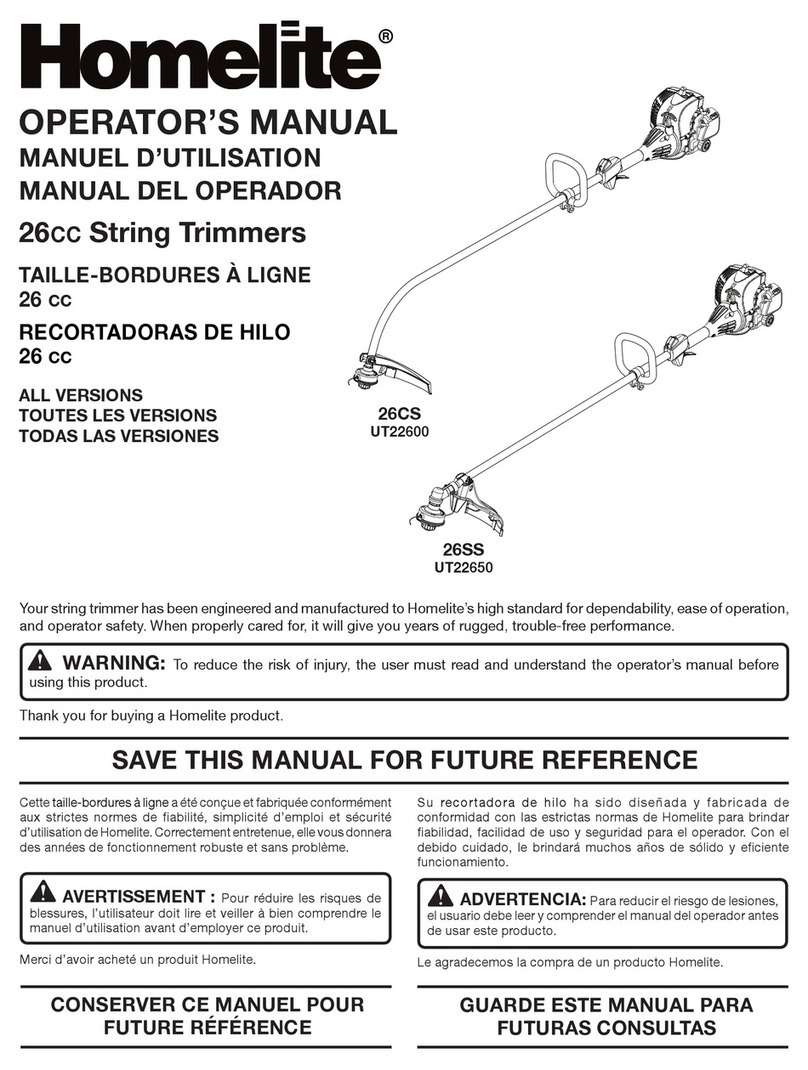
Homelite
Homelite 26SS UT22650 Operator's manual
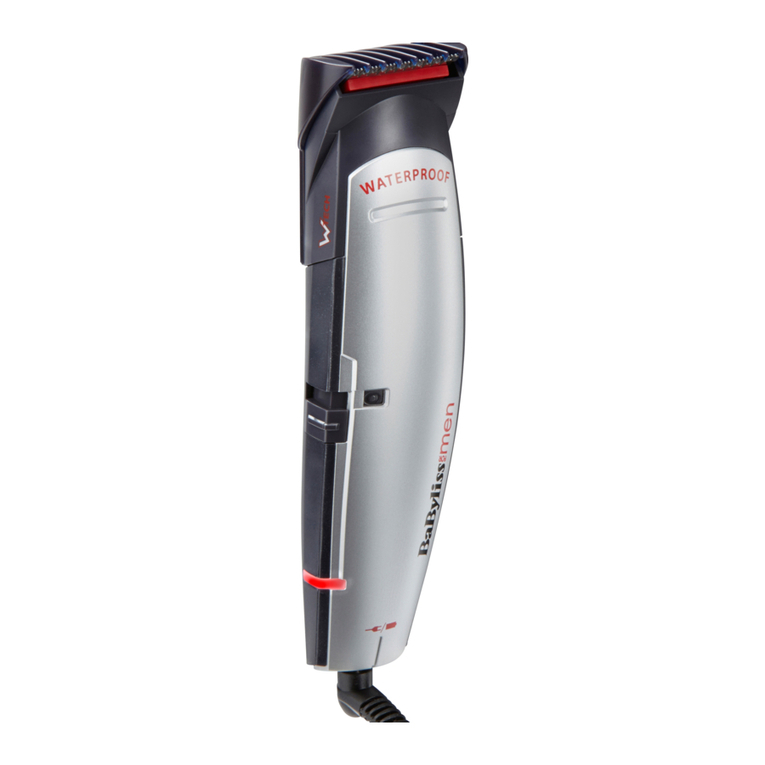
BaByliss for MEN
BaByliss for MEN WTECH x-10 quick start guide
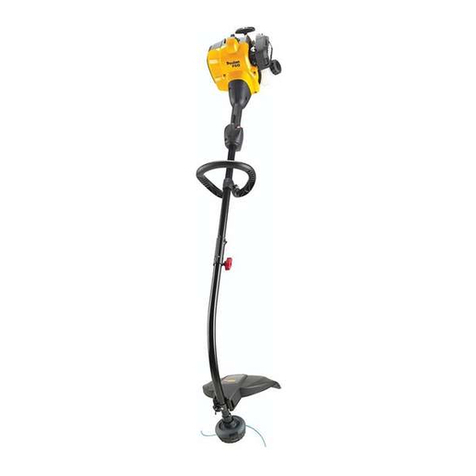
Poulan Pro
Poulan Pro PP28CD instruction manual

Hitachi Koki
Hitachi Koki CH 22EAP2 (50ST) Handling instructions

